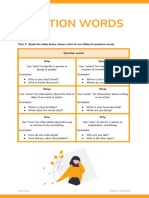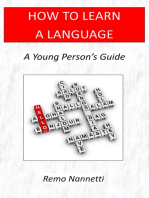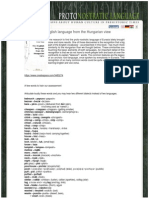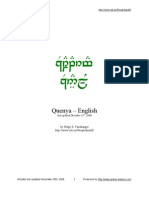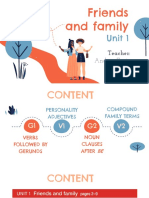0 ratings0% found this document useful (0 votes)
6 viewsEffective Communication Guide-1
Effective Communication Guide-1
Uploaded by
RomozCopyright:
© All Rights Reserved
Available Formats
Download as PDF, TXT or read online from Scribd
Effective Communication Guide-1
Effective Communication Guide-1
Uploaded by
Romoz0 ratings0% found this document useful (0 votes)
6 views4 pagesCopyright
© © All Rights Reserved
Available Formats
PDF, TXT or read online from Scribd
Share this document
Did you find this document useful?
Is this content inappropriate?
Copyright:
© All Rights Reserved
Available Formats
Download as PDF, TXT or read online from Scribd
Download as pdf or txt
0 ratings0% found this document useful (0 votes)
6 views4 pagesEffective Communication Guide-1
Effective Communication Guide-1
Uploaded by
RomozCopyright:
© All Rights Reserved
Available Formats
Download as PDF, TXT or read online from Scribd
Download as pdf or txt
You are on page 1of 4
Effective Communication Guide
1. Introduction
In our online classes, clear communication is important for helping students succeed. This
document gives teachers useful phrases, vocabulary, and grammar tips to improve their
interactions with students during online sessions.
Since teachers supervise students as they work independently on platforms like
Auth.edgeunity.com, it’s essential to create a friendly and supportive environment. The phrases
and vocabulary in this guide will help teachers express their ideas clearly and respond to student
questions effectively.
The grammar tips are designed to help teachers improve their own language skills, so they can
model good grammar and help students communicate better. By using these resources, teachers
can create a positive learning space where students feel confident and supported in their studies
2. Common Phrases for Online Supervision
A. General Supervision Phrases
• “Please share your screen so I can see what you’re working on.”
• “Let me know if you have any questions or need assistance.”
• “Can you explain your answer to me?”
• “What do you think about this solution?”
• “Let’s check your work together.”
B. Asking for Help
• “What do you need help with right now?”
• “Can you clarify what you’re struggling with?”
• “I’m here to help; just let me know how!”
• “Let’s take a moment to review that section together.”
C. Providing Guidance
• “Have you considered looking at the instructions again?”
• “Try breaking down the problem into smaller parts.”
• “Can you summarize what you’ve learned so far?”
• “Let’s focus on one step at a time.”
D. Returning to Previous Material
• “If you need to review the material, just let me know.”
• “Let’s revisit that video for more context.”
• “It might help to look at the examples again.”
E. Discussing Progress and Feedback
• “How is your work coming along?”
• “Can you show me your progress on the assignment?”
• “What percentage are you aiming for in this course?”
• “Let’s set a goal for your next assignment.”
F. Encouraging Participation
• “I encourage you to share your thoughts whenever you feel ready.”
• “Your input is valuable, so feel free to speak up!”
Effective Communication Guide
G. Addressing Student Concerns
• “If you’re feeling confused, let’s talk it through.”
• “I appreciate your effort; remember it’s okay to ask for help!”
H. When a student is Stuck or Distracted
• “I see you are having trouble. Let’s look at it together.”
• “Where are you stuck? I can help.”
• “Let’s break this into smaller steps.”
• “Do you need me to explain again?”
• “It’s okay to take a break. Let me know when you’re ready.”
• “You’re not working on your task. Let’s focus.”
• “It looks like you’re doing something else. Please focus on your work.”
• “Is something bothering you? Let’s finish this first.”
• “Let’s focus now. You can do it!”
• “I see you’re distracted. Please focus on this task now.”
3. Essential Vocabulary for Supervising Students
Here’s a list of vocabulary that teachers should know to create varied sentences:
• Clarify: To make something clear or easier to understand.
• Summarize: To give a brief statement of the main points.
• Analyze: To examine something in detail to understand it better.
• Discuss: To talk about something in detail.
• Evaluate: To assess the quality or importance of something.
• Demonstrate: To show how something is done.
• Encourage: To inspire someone to take action or express ideas.
• Reinforce: To strengthen an idea or skill through repetition.
• Modify: To change something to improve it.
• Utilize: To make use of something effectively.
4. Supporting Grammar Improvement for Teachers
1. Correcting Common Mistakes:
• Adding "-ing" or "-ed" incorrectly:
o Example: "I am work-ing on it." → "I am working on it."
o Tip: Only use "-ing" when the action is happening now. Use "-ed" for past
actions.
• Using the wrong tense (past, present, future):
o Example: "I will saw the video." → "I will see the video."
o Tip: Make sure the verb matches the time you are talking about. Use “will” for
future actions, and remember that "saw" is past tense, while "see" is present tense.
2. Simple Grammar Tips to Help:
• Use Simple Sentences: Start with short, clear sentences. For example:
o "I see the problem." (Correct)
Effective Communication Guide
o "I am seeing the problem." (Only use "am seeing" when talking about something
happening now.)
• Be Careful with Subject-Verb Agreement: The subject and verb must agree in number.
o Example: “She walk to school every day.” → “She walks to school every day.”
• Practice Verb Forms: Focus on the right form for the verb. For example:
o "I will talk." (future)
o "I talked." (past)
o "I am talking." (present continuous)
3. Strategies for Improvement:
• Practice Speaking Slowly: Speak slowly to make sure you use the correct tense.
• Listen to Yourself: Record your speech to notice if you are making mistakes.
• Model Good Grammar: When students make mistakes, gently repeat the correct
sentence. For example:
o Student: "I goed to the class."
o Teacher: "Oh, you mean 'I went to the class.'"
5. Important Grammar Lessons for Teachers
1. Pronouns and Their Agreement:
• What They Need to Know: Pronouns must match the noun they replace in both gender
and number.
o Example: “The students did their work.” (Correct)
o Example: “The student did their work.” (Incorrect – should be "his" or "her" if
singular)
• Tip: Ensure the pronoun agrees with the noun it refers to in terms of singular/plural and
gender.
2. Articles ("a", "an", "the"):
• What They Need to Know: Articles are used to define whether the noun is specific or
general.
o Example: “I saw a dog.” (general)
o Example: “I saw the dog.” (specific dog we know about)
• Tip: Use "a" for words starting with consonants (a book) and "an" for words starting with
vowels (an apple).
3. Word Order in Sentences:
• What They Need to Know: English follows a basic sentence structure of Subject + Verb
+ Object.
o Example: “She reads the book.” (Correct)
o Example: “Reads she the book.” (Incorrect)
• Tip: Always remember to put the subject first, then the verb, then the object.
4. Using Prepositions Correctly:
• What They Need to Know: Prepositions show relationships between nouns or pronouns
and other words in a sentence.
o Example: “The book is on the table.” (Correct)
o Example: “The book is in the table.” (Incorrect)
• Tip: Use common prepositions like “in,” “on,” “at,” “under,” and “by” in the right
context.
5. Commonly Confused Words:
Effective Communication Guide
• What They Need to Know: Some words sound similar but have different meanings. Be
mindful of them:
o "There" (location), "their" (possessive), "they're" (contraction of "they are")
o Example: “They’re going there with their friends.” (Correct)
o Example: “They’re going their with there friends.” (Incorrect)
• Tip: Practice the difference between these words by remembering their meanings.
6. Contractions (shortened forms):
• What They Need to Know: Contractions are commonly used in spoken language but
must be used carefully.
o Example: “I am” → “I’m”
o Example: “You will” → “You’ll”
o Tip: Use contractions in casual speech but avoid them in formal writing.
7. Adjective and Adverb Usage:
• What They Need to Know: Adjectives describe nouns, and adverbs describe verbs,
adjectives, or other adverbs.
o Example (Adjective): “She is a good student.” (describes a noun)
o Example (Adverb): “She studies well.” (describes a verb)
• Tip: Be careful not to confuse adjectives and adverbs. For example, don’t say “She runs
quick” (quick is an adjective; “She runs quickly” is correct).
8. Subject-Verb Agreement in Different Tenses:
• What They Need to Know: The subject and verb must match in number (singular or
plural), even in different tenses.
o Example (present tense): “She writes the letter.” (singular)
o Example (past tense): “They wrote the letter.” (plural)
o Example (future tense): “He will write the letter.” (singular)
• Tip: Pay attention to the verb endings in different tenses, like “-s” in the present for
third-person singular (he/she/it).
9. Using "Much" and "Many" Correctly:
• What They Need to Know: Use "many" for countable nouns and "much" for
uncountable nouns.
o Example (many): “How many books are there?”
o Example (much): “How much water do you need?”
• Tip: Countable things (books, apples, pens) use "many." Uncountable things (water,
time, sugar) use "much."
10. Simple vs. Compound Sentences:
• What They Need to Know: A simple sentence has one idea, and a compound sentence
has two ideas connected by a conjunction.
o Example (simple): “I read books.”
o Example (compound): “I read books, and I write stories.”
• Tip: Use "and" "but" "or" and "so" to connect ideas in a compound sentence.
You might also like
- Work On Your Grammar Pre-Intermediate A2 (RED)Document128 pagesWork On Your Grammar Pre-Intermediate A2 (RED)dianabau1985100% (37)
- The Revision Toolbox Teaching Techniques That WorkDocument40 pagesThe Revision Toolbox Teaching Techniques That WorkIra SafiraNo ratings yet
- Lpe2501 Lecture Notes 7 (Week 13 - 14)Document28 pagesLpe2501 Lecture Notes 7 (Week 13 - 14)SASHWENI A/P NANTHAGOPAL / UPM0% (1)
- Sentence StructureDocument20 pagesSentence StructureadamNo ratings yet
- Implicit and Explicit LearningDocument46 pagesImplicit and Explicit LearningMartinNo ratings yet
- Quentifiers-Some and Any Esl PDFDocument9 pagesQuentifiers-Some and Any Esl PDFVeron0% (1)
- Trainer Material 1 Grammar Functional ApproachDocument22 pagesTrainer Material 1 Grammar Functional ApproachKathrine HrulykNo ratings yet
- Patterns After Verbs: To (Rather Than A Bare Infinitive)Document4 pagesPatterns After Verbs: To (Rather Than A Bare Infinitive)RodrigoEspinosa'fNo ratings yet
- Grammar Book - NewDocument52 pagesGrammar Book - NewaravindNo ratings yet
- Types Communicative StrategyDocument17 pagesTypes Communicative Strategyw6yhmvppmcNo ratings yet
- Academic Language Conventions 2022Document41 pagesAcademic Language Conventions 2022nketjimotswalediNo ratings yet
- Modal verbs_Lesson PlanDocument4 pagesModal verbs_Lesson Planpeter.jancar92No ratings yet
- Avoid Word Choice ErrorsDocument3 pagesAvoid Word Choice Errorsmavel Toledo-TiongcoNo ratings yet
- 01 Suggestions For Learning in This CourseDocument1 page01 Suggestions For Learning in This Coursenyana varaNo ratings yet
- Teaching The English PhrasesDocument18 pagesTeaching The English PhrasesShireen RodrigoNo ratings yet
- Guia 7th Grado Ingles DefDocument13 pagesGuia 7th Grado Ingles DefjuliNo ratings yet
- Writing Effective Sentences-IDocument38 pagesWriting Effective Sentences-IAlae LucreciaNo ratings yet
- 1presenting VocabularyDocument3 pages1presenting VocabularyahmedaliiNo ratings yet
- English unit 5 notesDocument22 pagesEnglish unit 5 notessanjaykewat07050No ratings yet
- WD-LP - 2015-16Document72 pagesWD-LP - 2015-16Elizier 'Barlee' B. LazoNo ratings yet
- Lesson Set #2/reflectionDocument5 pagesLesson Set #2/reflectionforneckeraNo ratings yet
- Writing Skills Giselle BadíaDocument46 pagesWriting Skills Giselle BadíaDaniela SivoriNo ratings yet
- General English 5TH EditionDocument62 pagesGeneral English 5TH EditionDx DxNo ratings yet
- Kinds of PhraseDocument10 pagesKinds of PhraseMuhammad IbrahimNo ratings yet
- Lesson 1.2 Verbs - Subject Verb AgreementDocument28 pagesLesson 1.2 Verbs - Subject Verb AgreementCaryl Ruiz VillamorNo ratings yet
- Split - 2024 07 06 105058 - 13Document5 pagesSplit - 2024 07 06 105058 - 13Nil DesaiNo ratings yet
- Task Based ActivityDocument3 pagesTask Based ActivityAna CamoraNo ratings yet
- Certification Base Level Module 1Document53 pagesCertification Base Level Module 1Yessy AmaliaNo ratings yet
- SVA Grade 9Document29 pagesSVA Grade 9cabilingjillNo ratings yet
- Short Summery Note On Communicative English Skills IDocument17 pagesShort Summery Note On Communicative English Skills IYoomif TubeNo ratings yet
- Split - 2024 07 06 105057 - 6Document5 pagesSplit - 2024 07 06 105057 - 6Nil DesaiNo ratings yet
- Chapter 2. TIMEDocument24 pagesChapter 2. TIMEMarwa BaharNo ratings yet
- Connectives Clauses SentencesDocument31 pagesConnectives Clauses SentencesangelabeagarciaNo ratings yet
- How To Use Prepositions CorrectlyDocument4 pagesHow To Use Prepositions Correctlykdc13877No ratings yet
- Write Research Right!: The EFL Writer's Step-by-Step Guide to a Publishable Research PaperFrom EverandWrite Research Right!: The EFL Writer's Step-by-Step Guide to a Publishable Research PaperRating: 1 out of 5 stars1/5 (1)
- Andaya - Bsed English 3a - Final Lcle in Profed605Document13 pagesAndaya - Bsed English 3a - Final Lcle in Profed605Marife AbadiaNo ratings yet
- English GrammarDocument5 pagesEnglish GrammarDeepak DhanNo ratings yet
- Logros y ExperienciasDocument16 pagesLogros y ExperienciasyirtuhemleNo ratings yet
- English 2 W4-6Document17 pagesEnglish 2 W4-6trankquiltuneNo ratings yet
- Essential Collage English Ebook Latest EditionDocument117 pagesEssential Collage English Ebook Latest EditionRabiatul 0118No ratings yet
- Conjunctions in English2Document22 pagesConjunctions in English2DushaniNo ratings yet
- Les MisDocument10 pagesLes MisDani EsterhuysenNo ratings yet
- Prepositions LessonplanDocument7 pagesPrepositions LessonplanAniger LeeNo ratings yet
- Lesson Common Grammar MistakesDocument53 pagesLesson Common Grammar MistakesChristineNo ratings yet
- Proofreading TechniquesDocument36 pagesProofreading TechniquesHenry Languisan100% (1)
- Grammar Mini-Lesson PDFDocument9 pagesGrammar Mini-Lesson PDFapi-742343922No ratings yet
- Sentence Structure Subject Verb AgreementDocument3 pagesSentence Structure Subject Verb Agreementlaxmikanthreddy200428No ratings yet
- Kyiv Noivember 2024 SaturdayDocument57 pagesKyiv Noivember 2024 SaturdayNastia OrlovaNo ratings yet
- Implicit and Explicit LearningDocument46 pagesImplicit and Explicit Learningviscosity208No ratings yet
- Logros y ExperienciasDocument16 pagesLogros y ExperienciasDionisio Ramirez Desired EufraciaNo ratings yet
- Fifty Ways to Practice Grammar: Tips for ESL/EFL StudentsFrom EverandFifty Ways to Practice Grammar: Tips for ESL/EFL StudentsRating: 2.5 out of 5 stars2.5/5 (7)
- Fifty Ways to Practice Speaking: Tips for ESL/EFL StudentsFrom EverandFifty Ways to Practice Speaking: Tips for ESL/EFL StudentsRating: 4.5 out of 5 stars4.5/5 (7)
- Writing for the World of Work: “Writing Right – a Clear, Concise,Complete, Correct and Courteous Approach to Good Business Writing”From EverandWriting for the World of Work: “Writing Right – a Clear, Concise,Complete, Correct and Courteous Approach to Good Business Writing”No ratings yet
- Temas Ingles 2024Document11 pagesTemas Ingles 2024Mycaela Zambrana YugarNo ratings yet
- Word Order and Emphasis-2Document6 pagesWord Order and Emphasis-2Carolina GomezNo ratings yet
- Designing A Croatian Aspectual Derivatives Dictionary: Preliminary StagesDocument10 pagesDesigning A Croatian Aspectual Derivatives Dictionary: Preliminary StagesjoecergyNo ratings yet
- CAMBRIDGE YLE MOVERS® Vocabulary Worksheet) Word Document.Document11 pagesCAMBRIDGE YLE MOVERS® Vocabulary Worksheet) Word Document.Steve HaagNo ratings yet
- Types of Pronouns in EnglishDocument3 pagesTypes of Pronouns in EnglishBruno GregoryNo ratings yet
- Guzeeva K A Prichastie Grammatika Angliyskogo YazykaDocument114 pagesGuzeeva K A Prichastie Grammatika Angliyskogo YazykaСемён КопийNo ratings yet
- Pel - 121 - Lecture 6Document25 pagesPel - 121 - Lecture 6Mayank ThakurNo ratings yet
- Parts of Speech: Nouns, Verbs, Adjectives, Adverbs - Grand Learning SchoolDocument1 pageParts of Speech: Nouns, Verbs, Adjectives, Adverbs - Grand Learning SchoolMr. RomeelNo ratings yet
- Csaba Varga - The Nostratic Language - 12 The English Language From The Hungarian ViewDocument3 pagesCsaba Varga - The Nostratic Language - 12 The English Language From The Hungarian Viewmaghon100% (2)
- Reading 2 - Questions On Tallerman Chapter 2 - KEY-part 1Document2 pagesReading 2 - Questions On Tallerman Chapter 2 - KEY-part 1Renee CNo ratings yet
- QUANTIFIERSDocument5 pagesQUANTIFIERSVania LopezNo ratings yet
- Chapter Two - Passive VoiceDocument16 pagesChapter Two - Passive Voicewafaezoubayr1No ratings yet
- Kelompok 4 (Simple Present Tense)Document14 pagesKelompok 4 (Simple Present Tense)Dea PermataNo ratings yet
- Islcollective Worksheets Preintermediate A2 Intermediate b1 Upperintermediate b2 Ad Present SimpleDocument2 pagesIslcollective Worksheets Preintermediate A2 Intermediate b1 Upperintermediate b2 Ad Present SimpleBima Adhi Nugraha0% (1)
- Quenya-English DictionaryDocument152 pagesQuenya-English Dictionaryannie88100% (1)
- Change of PronounDocument5 pagesChange of PronounZaraJust4u0% (1)
- English Grammar BookDocument8 pagesEnglish Grammar BookJoxel J. GonzálezNo ratings yet
- Topic 22 Multi-Words VerbsDocument5 pagesTopic 22 Multi-Words VerbsMiriam Reinoso SánchezNo ratings yet
- Past Events A. Simple Past TenseDocument2 pagesPast Events A. Simple Past TenseAlisya MaharaniNo ratings yet
- Arabic Verb FormsDocument4 pagesArabic Verb FormsRihane El AlaouiNo ratings yet
- w3d4 Tenses of VerbDocument4 pagesw3d4 Tenses of VerbRov Pattaguan Buguina100% (1)
- Linking Words ExerciseDocument4 pagesLinking Words Exerciseloli paapNo ratings yet
- 7 Basic Sentence PatternsDocument4 pages7 Basic Sentence PatternsRisaaNo ratings yet
- Tutorial ArabicDocument120 pagesTutorial ArabicWaseemah100% (10)
- Abhinava Sanskritam Part 2 Karnatak Publishing House - TextDocument176 pagesAbhinava Sanskritam Part 2 Karnatak Publishing House - TextRajesh DesaiNo ratings yet
- Unit 1 Day 1Document19 pagesUnit 1 Day 1HyunDarioNo ratings yet
- Naps Ropin Time TableDocument508 pagesNaps Ropin Time TableRaghunath GhateNo ratings yet
- Learning About " PRONOUN" (Kata Ganti) : Subject Object Possessive Adjective Possessiv e Pronoun MeaningDocument2 pagesLearning About " PRONOUN" (Kata Ganti) : Subject Object Possessive Adjective Possessiv e Pronoun MeaningJohn JttNo ratings yet
- Date Sheet and Syllabus For PT1-Class 9 (2020-21)Document2 pagesDate Sheet and Syllabus For PT1-Class 9 (2020-21)Kanishka MandalNo ratings yet











































